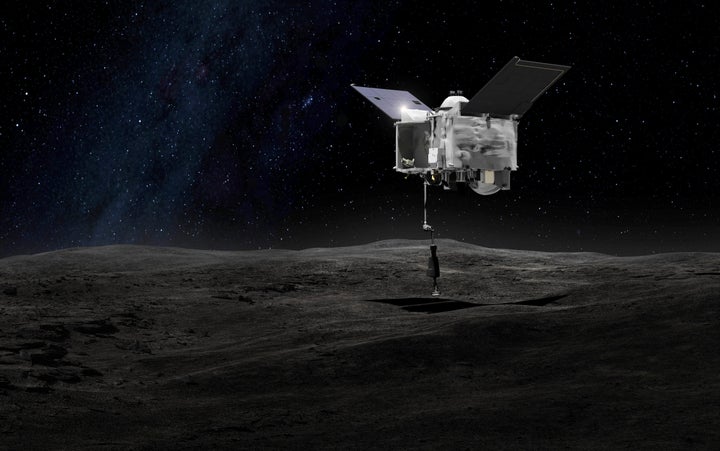
A NASA capsule carrying a tiny sample of a pretty ancient asteroid is set to return to Earth this Sunday after a seven-year mission.
Oh, and it will be travelling at a speed more than 15 times faster than a rifle bullet, creating a fireball in the sky.
Luckily, mechanisms are in place to prevent it having a chaotic landing when it reaches Utah’s West Desert, in the US, so scientists can examine its 250g sample.
The Osiris-Rex capsule grabbed a handful of an asteroid called Bennu, which is approximately 510m in height with an orbit not too dissimilar to Earth’s.
That’s why, according to the BBC, NASA thinks it is the most dangerous rock in our solar system, because it has the highest chance of colliding with Earth (but the odds are 1 in 2,700 and it isn’t likely to happen until the late 22nd Century anyway).
Discovered in 1999, it passes close to Earth around every six years. It’s thought to have broken off from a larger carbon-rich asteroid around 700 million to 2 billion years ago – but is likely to have been around for more than 4.5 billion years of history.
NASA’s website explains: “Because its materials are so old, Bennu may contain organic molecules similar to those that could have been involved with the start of life on Earth.”
Professor Dante Lauretta, principal investigator on the mission, explained: “When we get the 250g (9oz) of asteroid Bennu back on Earth, we’ll be looking at material that existed before our planet, maybe even some grains that existed before our Solar System.”
There’s hope that Bennu could illuminate some details about the Earth’s beginnings. For instance, did our planet end up creating life because asteroids – like Bennu – rained on Earth, thus distributing a crucial mix of chemicals?
Professor Lauretta continued: “We’re trying to piece together our beginnings. How did the Earth form and why is it a habitable world?
“Where did the oceans get their water; where did the air in our atmosphere come from; and most importantly, what is the source of the organic molecules that make up all life on Earth?”
This is a mission which has been underway since 2016, when NASA first launched the probe.
It didn’t reach the asteroid until 2018, and it took another two years before the scientists had found a suitable area on Bennu for the probe to take a “soil” sample of sorts.
Interestingly, Dr Sir Brian May – the guitarist from the iconic band Queen – helped.
Alongside collaborator Claudia Manzoni, he used stereo imaging to make a 3D view of a scene and find possible sample sites across the space rock.
After its seven-billion kilometre trip, the capsule will be taken to the Johnson Space Centre in Texas to be examined.
Scientists will be looking for water, carbon and amino acids in their “exogenus delivery hypothesis” – the concept that asteroids helped build life on our planet.
